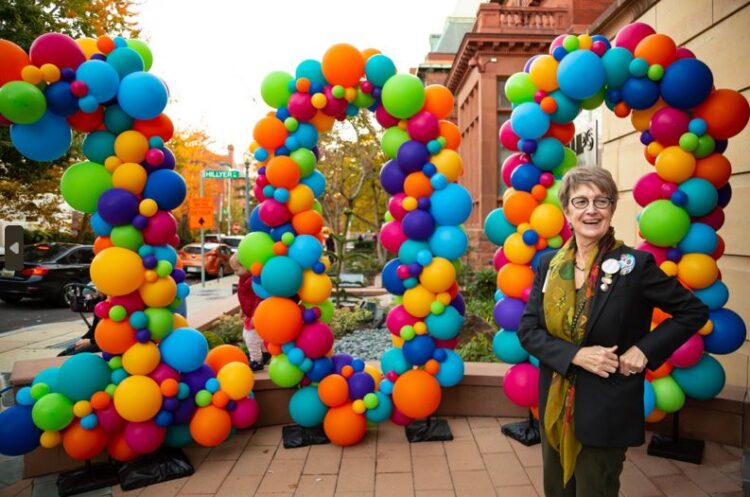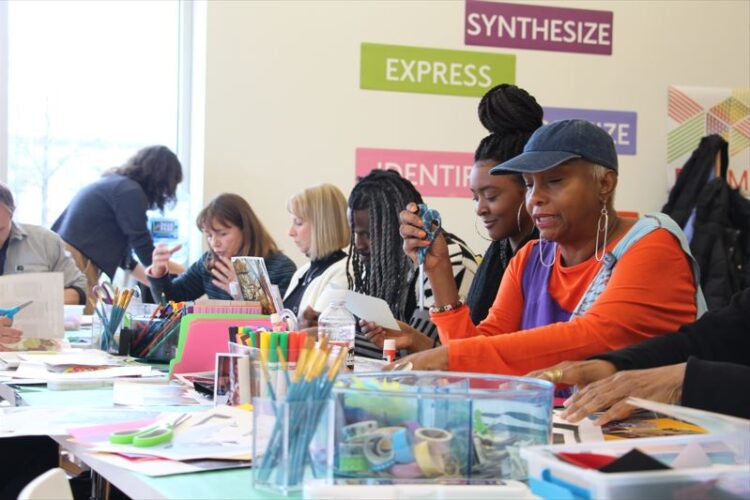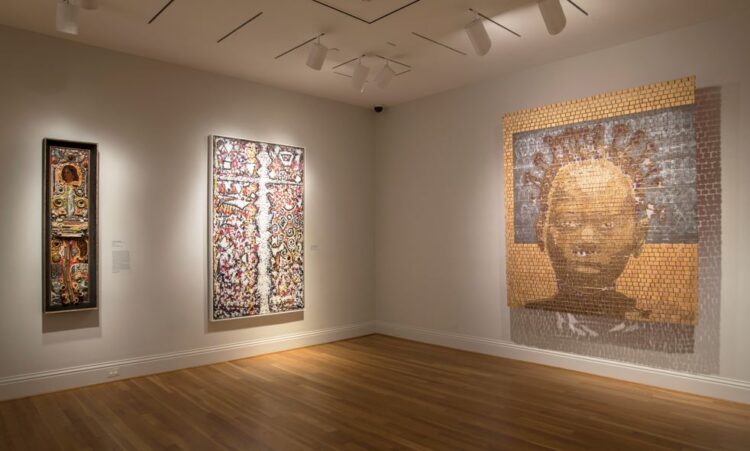Dorothy Kosinski, Vradenburg Director and CEO of The Phillips Collection, will conclude her tenure at the end of 2022. Following 15 years of distinguished leadership, she will be named Director Emerita. Here, Dorothy reflects on her time at the Phillips.

Dorothy Kosinski at the Phillips’s 100th Birthday Party, November 2021. Photo: Ryan Maxwell
How do you think the Phillips has changed over the last 15 years?
During my tenure, the museum has moved outside its walls—it has become more engaged with and responsive to our communities, to the art of our time, and to the urgent issues that confront our society today. This is probably most apparent in our satellite space at THEARC in Southeast DC. But it is also clear in our growing collection that embraces diverse voices from across our nation and the world. We tell stories from Kinshasa, Congo; from Sitka, Alaska; from New Delhi, India; from Harlem; and from Washington, DC. We tell a more complex and global story about modern and contemporary art. Additionally, the Phillips is engaged in constructive conversation about migration, climate degradation, art and wellness, the threat of war, and women in the arts. At the same time, we model the most serious scholarship and conservation inquiry about our 19th- and 20th-century holdings to continuously advance new knowledge and new perspectives on our historic core collection. Of course (and greatly accelerated since the pandemic), our museum races to stay in advance of the demands for technological portals and digital assets in order to achieve immediate, transparent, and in-depth access.
The Phillips is not isolated and our work reflects the enormous changes in the field. I think I will paraphrase my esteemed colleague Lonnie Bunch who said that the museum is not a community center but must be at the center of the community. That pretty much sums up the thrust and direction of this change. Additionally I will point to a book that just came out Change is Required: Preparing for the Post-Pandemic Museum containing my own essay (among 47 others) entitled “Purpose Is the Only Thing.” I think that, too, captures the essence of our efforts.

Workshop at Phillips@THEARC led by artist Janet Taylor-Pickett, February 2020
What makes the Phillips special?
The Phillips has a very precious and distinct character—intimate and accessible because of its domestic scale; personal and idiosyncratic because of its genesis as a private collection; deeply rooted in the immediate community and yet acknowledged globally for its expansiveness and excellence.
What are your hopes for the Phillips’s next century?
The Phillips was out ahead in its focus on issues of diversity, equity, accessibility, and inclusion. My hope is that this work only deepens, and that these values continue to permeate and drive all of our work and initiatives across the museum as they do now. That is the responsibility of the next generation of leaders and trustees.

Installation view of Seeing Differently: The Phillips Collects for a New Century, featuring (left to right) Alfonso Ossorio, Excelsior (1960), Richard Pousette-Dart, Totemic Transcendental (1982), Aimé Mpane, Maman Calcule (2013), Photo: Lee Stalsworth
What exhibitions and programs are you most proud of?
It is so hard to choose a favorite exhibition. I think the exhibition that I co-curated with my dear colleague Dr. Klaus Ottmann on Jackson Pollock, Alfonso Ossorio, and Jean Dubuffet (2013) was groundbreaking in its scholarly framing of an artist who had been unknown and underappreciated for so long. More recently, the project conceived by my esteemed colleague Dr. Adrienne L. Childs, Riffs and Relations: African American Art and the European Modernist Tradition (2020), was visually and intellectually exhilarating in its presentation of a complex and multi-layered story. I am very proud of our annual Artists of Conscience series; that has been one of our primary platforms for exploring the tough and knotty ideas in the art world and society at large. Most importantly, it is the artists’ voice that we center. I am inspired by our Art and Wellness initiatives that bring us in meaningful and impactful dialogue with children, veterans, and older adults. Empathy and resilience are the values at the heart of this work.
What is your favorite work in the collection? A work that is not as well known?
That’s an impossible question for me! I adore Manet’s Spanish Ballet (1862). I also love Simone Leigh’s No Face (Crown Heights) (2018). A work you might not know? For that I’d choose Aaron Maier-Carretero’s Not In Front of the Kids (2020) that we purchased from our juried invitational exhibit during the Centennial.
What are your plans after the Phillips?
I plan to exhale! I serve on the boards of directors of two foundations as well as on the National Endowment for the Humanities National Council, so I am pretty busy as it is. I am in the midst of several conversations framing my role at other organizations that allow me to offer my knowledge and experience in impactful leadership. I am also investigating fellowships and residencies that will allow me to return to some long postponed as well as new curatorial and scholarly projects.

Wonderful piece on a wonderful director who carried forth the expansive, diverse views of Duncan and Majorie. Dorothy was also a fan of my late visiting Springer Spaniel, Samantha, whom she petted enthusiastically.
so sad to see you go!
good luck with all your new projects………..